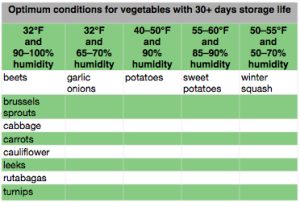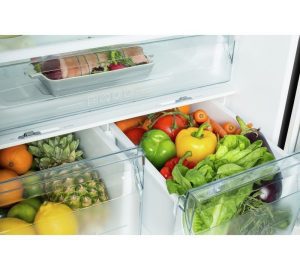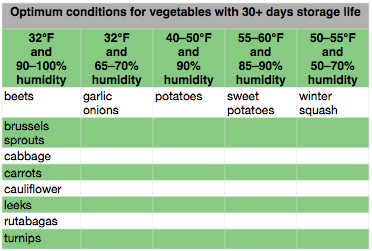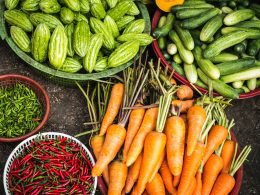Introduction
The refrigerator is a vital appliance in our daily lives, helping us keep our food fresh for more extended periods. However, when it comes to vegetables, it’s not just about tossing them into the fridge and hoping for the best. To maintain the freshness and nutritional value of your veggies, it’s essential to understand the ideal temperature and humidity settings for vegetable storage. In this article, we will explore the science behind vegetable storage, the importance of the right conditions, and provide practical tips for maintaining optimal freshness.
The Science of Vegetable Storage
Before delving into the specifics of temperature and humidity settings, let’s briefly explore the science behind vegetable storage. Vegetables are living organisms, and even after they are harvested, they continue to respire. Respiration is the process by which vegetables take in oxygen and release carbon dioxide. It also leads to the breakdown of sugars, which can result in the loss of freshness and nutritional quality.

1. Temperature Settings
The temperature inside your refrigerator plays a significant role in preserving the freshness of vegetables. The ideal temperature range for vegetable storage is between 35°F to 40°F (1.7°C to 4.4°C). Within this range, several key benefits are realized:
- Enzyme Activity: At temperatures below 40°F (4.4°C), the activity of enzymes responsible for ripening and decay is significantly slowed. This means your vegetables will maintain their freshness for a more extended period.
- Microbial Growth: Lower temperatures also inhibit the growth of harmful microorganisms, including bacteria and molds, which can cause spoilage.
- Water Loss: Cold temperatures help reduce the rate of water loss from vegetables, preventing wilting and maintaining their crispness.
To maintain the ideal temperature settings in your refrigerator, use a thermometer to regularly check and adjust the temperature if necessary. Refrigerator thermostats can sometimes fluctuate, so it’s essential to ensure that your vegetables consistently remain within the recommended temperature range.
2. Humidity Control
Proper humidity control is equally important for vegetable storage. Different vegetables have varying humidity requirements, so it’s crucial to understand and use the humidity settings available in your refrigerator’s crisper drawers.
- High Humidity Setting: Many modern refrigerators come equipped with adjustable humidity controls for the crisper drawers. Leafy greens, herbs, and vegetables with high water content (e.g., cucumbers, broccoli, zucchini) benefit from a high humidity setting. This setting helps to retain moisture, prevent wilting, and maintain the crispness of these vegetables.
- Low Humidity Setting: Vegetables with low water content (e.g., carrots, bell peppers, and potatoes) should be stored in the low humidity setting. This prevents excess moisture buildup, which can lead to rot, mold, and spoilage.
Utilizing the correct humidity settings ensures that your vegetables receive the appropriate moisture levels, preventing them from drying out or becoming overly damp.
3. Proper Storage Tips
In addition to temperature and humidity control, there are some general guidelines that should be followed for optimal vegetable storage:
- Use Vegetable Crisper Drawers: Take advantage of your refrigerator’s designated vegetable crisper drawers, which are designed to maintain the right conditions for vegetables. Use perforated plastic bags or containers to further optimize humidity control within these drawers.
- Avoid Over-Packing: Overcrowding your vegetable drawers can restrict airflow, leading to uneven temperature and humidity distribution. This can result in some vegetables spoiling more quickly than others.
- Keep Vegetables Separate from Fruits: Some fruits, such as apples and bananas, release ethylene gas, which can accelerate the ripening of nearby vegetables. Store fruits and vegetables in separate drawers or compartments to prevent cross-contamination and premature ripening.
- Regularly Clean and Organize: Periodically clean your refrigerator to remove spoiled or decaying vegetables, which can release odors that affect the freshness of other items. Proper organization also helps you keep track of what you have and use it before it goes bad.

https://img.ebyrcdn.net/873702-840025-800.jpg
Conclusion
Proper temperature and humidity settings in your refrigerator are essential for preserving the freshness and quality of vegetables. By following the guidelines outlined in this article, you can extend the shelf life of your vegetables, reduce food waste, and ensure that your family enjoys healthy, crisp, and delicious produce for longer periods. Taking the time to adjust your refrigerator settings and use designated storage compartments will go a long way in maximizing the longevity of your vegetables and minimizing waste.












